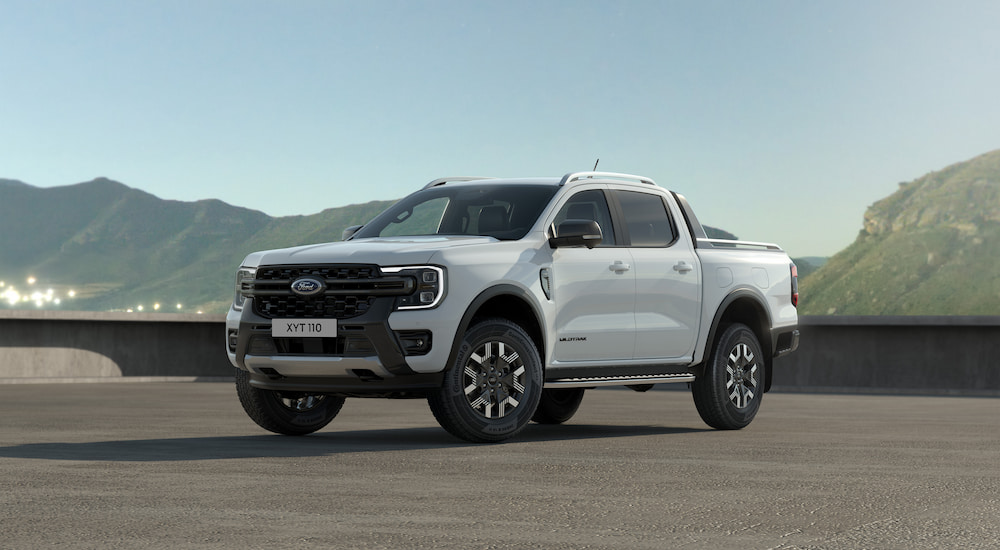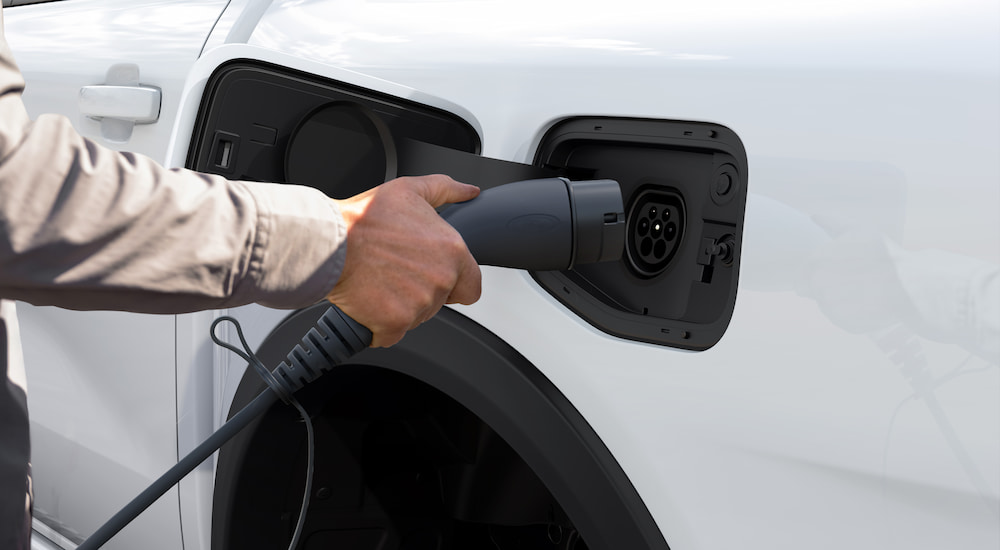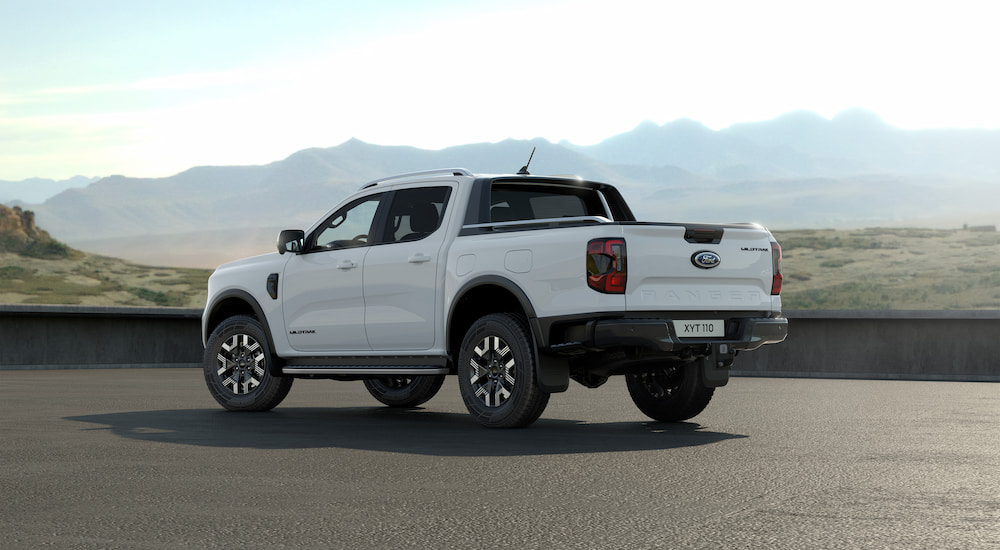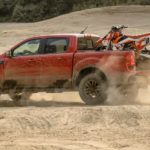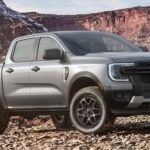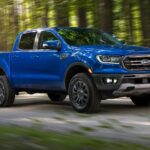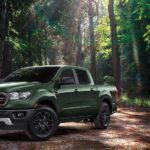While the interest in fully electric vehicles seems to be cooling off right now, the number of hybrid and plug-in hybrid options is increasing at an astounding rate. Nowhere is this more apparent than in the recent success Ford has seen with hybrid pickup trucks like the F-150 PowerBoost and Maverick Hybrid. Not so long ago, the idea of a hybrid truck would have been unimaginable, but the hybrid Ford trucks for sale have been an instant hit, with fully 20% of F-150 sales, including a hybrid powertrain in the second quarter of 2024. There are even rumors that the next-generation Super Duty models will include some form of hybrid option! But what about that final member of the Ford truck family, the midsize Ranger?
As it turns out, Ford has announced that there will be a plug-in hybrid version of the Ranger starting with the 2025 model year––but it might not be making its way to the American market. This new truck has only been confirmed for the European and Australian markets, but it looks like it could be a good fit for American midsize truck drivers, and there is a chance that it will eventually show up at Ford dealerships in America. After all, the current generation Ranger debuted in overseas markets back in 2022, even though we didn’t get our hands on it until the 2024 model year. It makes sense that Ford would prioritize the markets where midsize trucks are more popular, but once production is in full swing, why wouldn’t it bring the Ranger PHEV here as well? So, let’s take a look at this upcoming forbidden fruit and see how it could benefit American drivers.
The Next Generation of Ford Hybrid Truck Technology
Like the F-150 PowerBoost, the Ranger PHEV is built around an electrified version of one of Ford’s turbocharged EcoBoost engines. However, while the full-size hybrid makes use of the powerful 3.5L EcoBoost V6, the midsize option uses the smaller but still potent 2.3L EcoBoost I-4. This is the same engine that has served as the base powertrain for the Ranger since its return to the market in 2019, which means it is a rugged and proven option that is a good fit for this model.
In its current non-hybrid form, the 2.3L EcoBoost provides the Ranger with 270 hp and 310 lb-ft of torque, giving the truck a maximum towing capacity of 7,500 lbs. There is already plenty of power for a midsize truck, but the PHEV version adds a 100 hp electric motor. Calculating the total output of a hybrid is not as simple as adding the outputs of the gasoline engine and electric motor, but we can assume this powertrain will likely be comparable to the Ranger’s optional 2.7L EcoBoost V6, which provides 315 hp and 400 lb-ft of torque. While the PHEV might be down slightly in power, it will be more efficient than the V6.
Although the added weight of the PowerBoost system in the F-150 means it comes with a small towing capacity penalty, Ford assures us that the Ranger PHEV will offer the same maximum towing capacity as the conventional powertrain options. Ford also claims an estimated payload capacity of 2,200 lbs, which exceeds that of the conventional gasoline Ranger by some 400 lbs, but this may be an artifact of different markets calculating maximum payloads differently. Regardless, the Ranger PHEV will be every bit as capable as the current Ranger options and have additional benefits to boot.
The big difference between the Ranger PHEV and Ford’s current lineup of hybrid trucks for sale is the “plug-in” part of the name. The new powertrain includes a much larger 11.8 kWh battery pack compared to the 1.5 kWh battery in the F-150 PowerBoost, which gives the Ranger PHEV an estimated electric range of 28 miles. Admittedly, this is calculated using the foreign-market WLTP standards, which are more generous then our EPA standards, but even if this fell to around 20 miles of range in American testing, that’s enough to cover the average commute.
More Power for Projects
One of the most popular features of the modern F-150 is Pro Power Onboard––a built-in generator that uses the truck’s engine to provide electricity through a series of standard outlets in the truck’s bed and cab. The conventional gasoline engines can provide up to 2.4 kW of 120V 20A power, while the PowerBoost hybrid offers up to 7.2 kW of 240V 30A power. This means you no longer need to cart a generator around in the bed to have electricity available wherever you go and can even power your house during a blackout.
While the 2024 Ranger offers its own 120V outlets, it is limited to providing just 400 watts of power. However, the Ranger PHEV brings the Pro Power Onboard system to the midsize truck segment. Two options are available in foreign-market trucks: a 2.3 kW 10A system and an impressive 6.9 kW 30A system. While the exact numbers would almost certainly be different for an American version of this model, given our different standards for electricity, this rendition of Pro Power Onboard is in the same ballpark as what you get with the full-size F-150. Since many drivers choose the Ranger for its off-road capabilities and take it on adventures far from civilization, this would be an extremely handy feature to have and a major selling point.
Does America Need the Ranger PHEV?
So far, Ford hasn’t expressed any official interest in bringing the Ranger PHEV to America, but that looks like a mistake. Currently, Ford has cornered the hybrid truck market, with over three quarters of the hybrid pickups sold in 2023 wearing the Blue Oval. However, the competition is catching up fast, particularly in the midsize truck segment. Toyota recently unveiled a hybrid version of its best-selling Tacoma for the 2024 model year, and Jeep has confirmed that a Gladiator 4xe plug-in hybrid will be arriving for the 2025 model year. As Ford’s own sales of full-size and compact models show, hybrid trucks are selling like hotcakes, and Toyota and Jeep will likely see significant sales simply by being the first movers in the midsize segment.
The Ford Ranger PHEV is perfectly positioned to compete here. Not only can it build on the solid reputation already established by the F-150 and Maverick hybrids, but it promises to be more competitive than either the Tacoma i-FORCE MAX or Gladiator 4xe. While the electrified Tacoma is an engineering masterpiece that offers more torque than any other model in the segment, it is not a plug-in, and the $46,300 starting price is rather steep. Meanwhile, the Gladiator 4xe is a dedicated off-road model that simply won’t appeal to many shoppers looking for a more traditional truck. Further, neither of these competitors can match the Pro Power Onboard system. This gives Ford the perfect opportunity to bring the Ranger PHEV to market and continue its hybrid truck sales success.
It’s Just a Matter of Time
While the 2025 Ranger PHEV would almost certainly find success if Ford decides to bring it to America, there is no guarantee that this will happen. Even if it does, it may take a few years before it occurs. Not only will Ford likely want to prioritize the European and Australian markets where midsize trucks are more common, but it will also likely need to retool a factory in the Americas to skirt the infamous “Chicken Tax” since the Ranger PHEV is currently only being produced in South Africa. However, even if we don’t get this version of the Ranger, a hybrid of some description is almost certainly in the cards. Ford isn’t going to leave just one of its four truck models without a hybrid powertrain option, and there are strong rumors that a hybrid version of the closely-related Bronco is already in the works. It’s just a matter of time before American drivers will be able to find a hybrid Ranger for sale.
